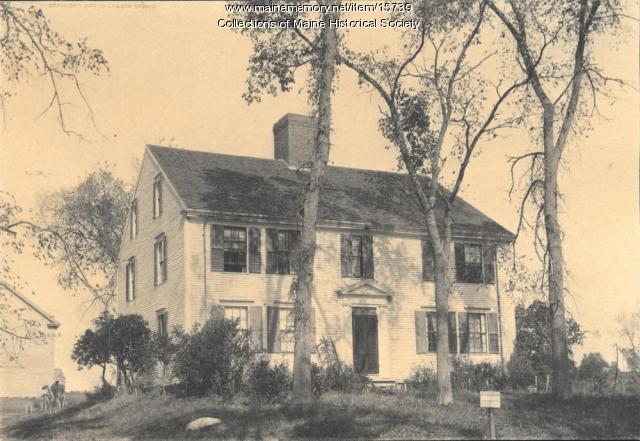Keywords: Cumberland County Deed
Item 31239
Deed from Robert Southgate to Samuel Coolbroth, May 5, 1822
Contributed by: Scarborough Historical Society & Museum Date: 1822-04-22 Location: Scarborough Media: Ink on paper
Item 20270
Wabanaki deed to Richard Wharton, 1684
Contributed by: Maine Historical Society
Date: 1684-07-07
Media: Ink on paper
This record contains 3 images.
Exhibit
The history of the region now known as Maine did not begin at statehood in 1820. What was Maine before it was a state? How did Maine separate from Massachusetts? How has the Maine we experience today been shaped by thousands of years of history?
Exhibit
Home: The Wadsworth-Longfellow House and Portland - Researching Your Home
"Check your county's Registry of Deeds office. Some counties have digitized records, which can be found on an online, searchable database."
Site Page
Cumberland & North Yarmouth - Maine's Pauper Laws and the Cumberland Overseers of the Poor
"Maine's Pauper Laws and the Cumberland Overseers of the Poor Overseers seek reimbursementPrince Memorial Library Legal Settlement Maine law in…"
Site Page
Scarborough: They Called It Owascoag - Scarborough Marsh: "Land of Much Grass" - Page 4 of 4
"… Historical Society archives Cumberland County Registry of Deeds. Book 100, page 571. Domingue, Robert."
Lesson Plan
Nation to Nation: Treaties and Legislation between the Wabanaki Nations and the State of Maine
Grade Level: 9-12
Content Area: Social Studies
This lesson plan asks high school students to think critically about and look closely at documentation regarding the Nation-to-Nation relationship between the Wabanaki Tribes/Nations and the State of Maine. This lesson asks students to participate in discussions about morality and legislative actions over time. Students will gain experience examining and responding to primary and secondary sources by taking a close look at documents relating to the Maine Indian Claims Settlement Act of 1980 (MICSA) and the issues that preceded and have followed the Act.
Lesson Plan
Longfellow Studies: The Elms - Stephen Longfellow's Gorham Farm
Grade Level: 6-8, 9-12
Content Area: English Language Arts, Social Studies
On April 3, 1761 Stephen Longfellow II signed the deed for the first 100 acre purchase of land that he would own in Gorham, Maine. His son Stephen III (Judge Longfellow) would build a home on that property which still stands to this day. Judge Longfellow would become one of the most prominent citizens in Gorhams history and one of the earliest influences on his grandson Henry Wadsworth Longfellow's work as a poet.
This exhibit examines why the Longfellows arrived in Gorham, Judge Longfellow's role in the history of the town, Henry Wadsworth Longfellow's vacations in the country which may have influenced his greatest work, and the remains of the Longfellow estate still standing in Gorham today.












